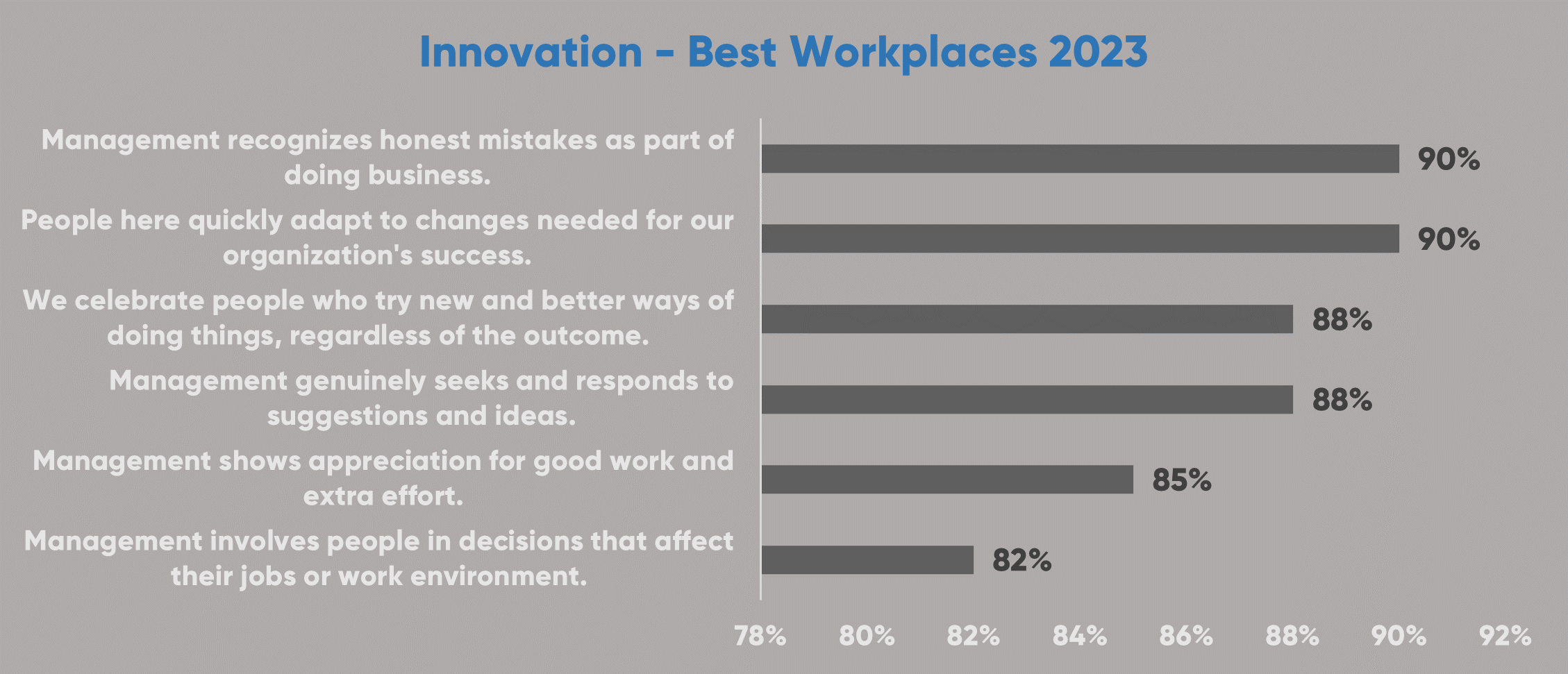When it comes to unlocking innovation, workplace diversity and inclusion is the key! Research confirms that there is a statistically significant relationship between diversity and innovation outcomes. Organisations with above-average total diversity, as measured by 6 dimensions of diversity – migration, industry, career path, gender, education, and age – had 19% points higher innovation revenues . Industry, nation of origin, and gender had slightly larger effects.
It seems that investing in DEI means that you can benefit from a broader spectrum of perspectives, creativity, and innovation, which can help drive the business forward. We would like to highlight 3 fundamental conditions to creating a “diversity drives innovation” environment in your organisation:
1. HIRE FOR VALUE FIT
Organisations often think that hiring for culture fit hurts innovation because “if everyone is the same, it reduces creative thinking and therefore innovation”. Yet, people can think differently while still living the organisation’s overall values. A study of 346 employees working in 75 health care teams found that, when employees perceived higher value fit to their team, team leaders rated the team as being more innovative . When team members identify more strongly with the team, they are more appreciative of diverse ideas and approaches of the other team members. Innovation often involves conflict and difficult processes, but value similarly can help keep everyone aligned . This suggests that, when done correctly, hiring based on fit may enhance team identification and therefore benefit rather than hurt innovation.
2. TO EXCEL, DIVERSE TEAMS NEED PSYCHOLOGICAL SAFETY
When you have a diverse and inclusive workplace, you can unleash an explosion of ideas. Yet, in practice, diverse teams often underperform relative to homogenous teams. They face communication challenges that get in the way of their undeniable potential. However, in those teams with high psychological safety, diversity was positively associated with performance . Employees from every group need to feel psychologically safe to bring their unique perspectives forward. The concept of psychological safety means creating a workplace where employees feel safe to take risks, voice their opinions, and admit mistakes without fear of punishment or judgment. When individuals feel psychologically safe, they are more likely to share ideas and perspectives, which sparks innovation.
| At Belgian Best WorkplacesTM, 88% of employees surveyed say their organisation is a psychologically and emotionally healthy place to work. |
3. RECOGNISE AND REWARD INNOVATION
Create an intentional structure and strategy of co-creation where employees are encouraged, empowered, and recognised for trying new and better ways of doing things, regardless of who they are and what they do for the business. Do you recognise and reward individuals having a direct positive impact, not ones that are limited to specific groups (ie the R&D team). Do you recognise and reward ideas coming from employees where "innovation" is not part of their daily job? Recognition highlights all the individuals that contributed to the innovation, and not just leaders.
By appreciating every idea, big or small, and seeing its potential, organisations ensure that employees enthusiastically further develop their idea into a real business plan, making sure the company can grow.

-------------------------------------------------------------------
SOURCES
1. Lorenzo, R., & Reeves, M. (2018, January 30th). How and Where Diversity Drives Financial Performance. Harvard Business Review. Retrieved from: https://hbr.org/2018/01/how-and-wherediversity-drives-financial-performance
2. Mitchell, R., Parker, V., Giles, M., Joyce, P., & Chiang, V. (2012). Perceived value congruence and team innovation. Journal of Occupational and Organizational Psychology, 85(4), 626-648.
3. Jehn, K. A., Northcraft, G. B., & Neale, M. A. (1999). Why Differences Make a Difference: A Field Study of Diversity, Conflict and Performance in Workgroups. Administrative Science Quarterly, 44(4), 741–763.
4. Harvard Business Review: Research: To Excel, Diverse Teams Need Psychological Safety (2022) by Henrik Bresman & Amy C. Edmondson

